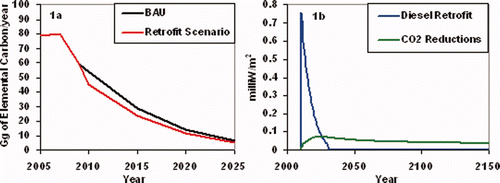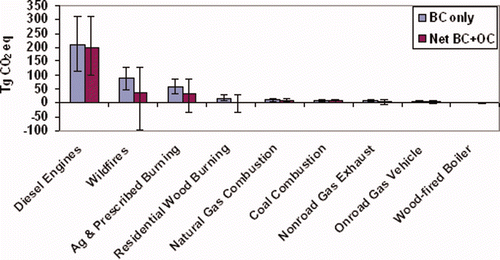Figures & data
Table 1. BC warming potentials.
Figure 1. (a) Word 3 Future US BC emissions from on-road sources under business as usual and also with a policy assuming that all diesel retrofits available for less than $50K/lifetime Mg of BC abated are implemented in 2010. (b) The tall, blue curve shows the radiative forcing change from the BC reductions in Figure 1a. The long, green curve shows the radiative forcing change from a reduction of CO2 in each year of the program that would result from trading the BC reductions for CO2 reductions at a GWP of 1000. This highlights the difference in the temporal nature of radiative forcing changes resulting from BC and CO2 emission reductions.

